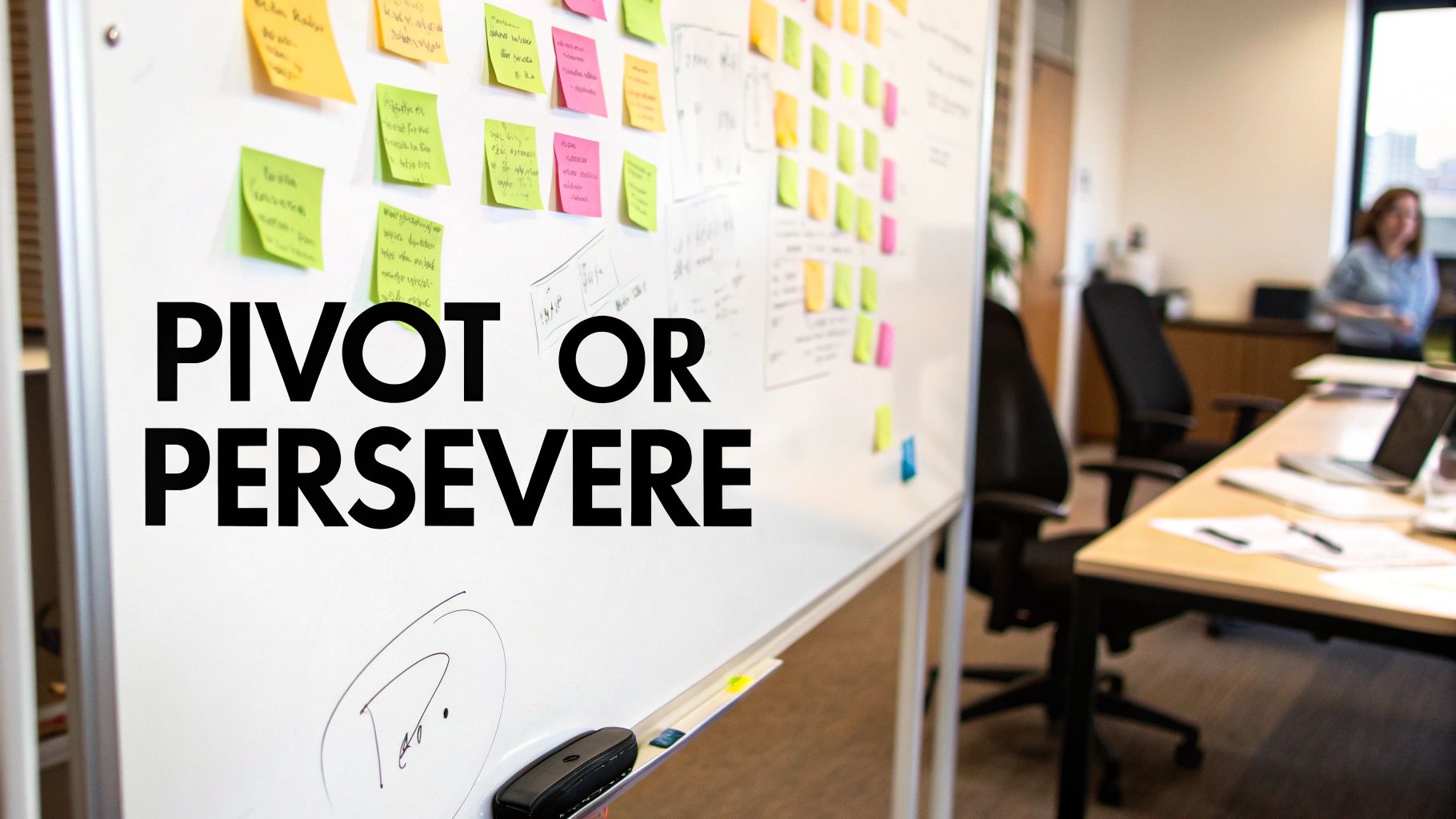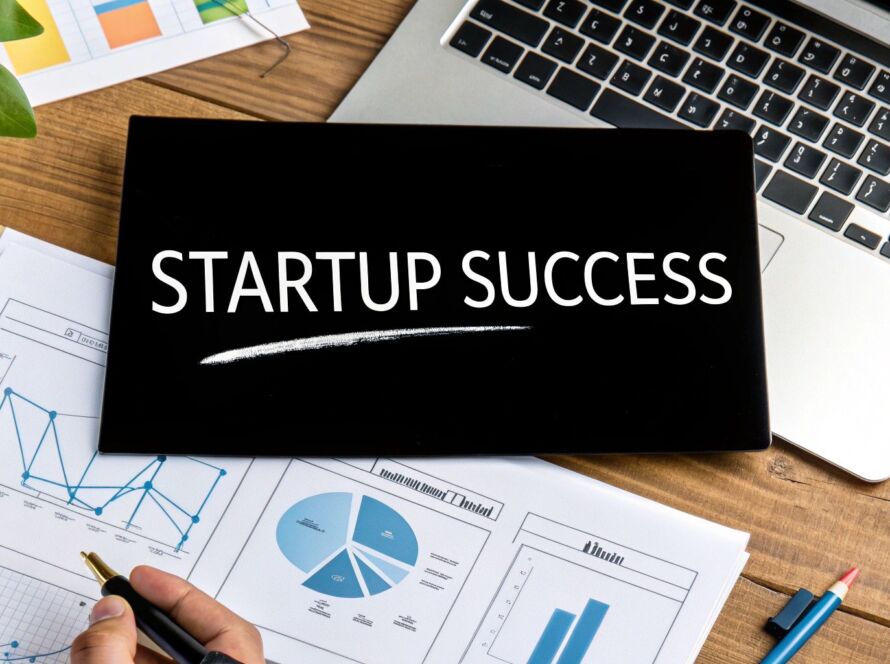The Evolution of Lean Startup Thinking

For entrepreneurs seeking better ways to build successful businesses, the lean startup approach offers proven wisdom gained through years of real-world experimentation. This powerful methodology emerged gradually as innovative thinkers worked to solve common startup challenges. Let's explore how these ideas developed and why they continue to shape modern business practices.
Early Influences and the Birth of a Movement
The story begins in post-World War II Japan, where Toyota pioneered lean manufacturing principles focused on eliminating waste and delivering customer value through constant improvement. Years later, Eric Ries recognized that these ideas could transform how startups operate. While working on his own ventures, Ries saw that traditional business planning often failed startups because it couldn't account for market uncertainties. This insight led him to develop a more flexible, experimental approach that would help entrepreneurs learn and adapt quickly.
The Core Principles of Lean Startup Methodology
At the heart of lean startup thinking is the Build-Measure-Learn cycle – a practical framework that guides founders to test ideas rapidly with real customers. This approach helps teams avoid wasting time and money on features nobody wants. For instance, instead of spending months perfecting a product in isolation, a startup might release a basic version to gather genuine user feedback. This hands-on learning allows teams to make smarter decisions about what to build next. Real examples show this method in action – like when a software startup launches with just core features, then uses customer insights to guide future development.
The Rise of Lean Startup Communities and Global Adoption
The lean startup movement gained momentum as entrepreneurs worldwide began sharing their experiences and success stories. Passionate founders formed meetup groups and online communities, creating spaces where people could learn from each other's wins and setbacks. By 2012, these gatherings were happening in over 100 cities globally, showing how these ideas resonated across cultures and markets.
But perhaps the most powerful sign of lean startup's impact is its adoption by major companies like Dropbox, Intuit, and General Electric. These industry leaders saw that lean methods could spark innovation within established organizations too. Their success stories helped cement lean startup principles as essential tools for any business seeking to grow and adapt in today's dynamic markets. As more companies embrace these ideas, we continue to discover new ways to apply lean thinking to solve complex business challenges.
Mastering the Build-Measure-Learn Cycle

At the heart of successful startups is a simple but powerful approach: the Build-Measure-Learn feedback loop. This practical framework helps new companies test ideas quickly, learn from real customer feedback, and steadily improve their products. Let's explore how this cycle works in practice and why it matters for your startup's success.
Building Your Minimum Viable Product (MVP)
The journey begins with creating a Minimum Viable Product – but this isn't about rushing an incomplete product to market. Instead, it's about identifying the core features that will solve your customers' main problems. Think of it like cooking a new dish: you start with the essential ingredients before adding extra flavors. For instance, when Dropbox first started, they didn't build their full file-sharing platform right away. They began with a simple video showing how the service would work, which helped them gauge interest and gather early feedback from potential users.
Measuring Meaningful Data
After launching your MVP, the next step is gathering real insights about how people use your product. This goes beyond basic metrics like page views – you need to understand what truly matters to your customers. For example, if you're running a subscription service, focus on metrics that show customer satisfaction and loyalty, like how often people use your product or how long they stay subscribed. These numbers tell the real story of your product's impact and help guide your next steps.
Learning and Iterating
The most exciting part happens when you analyze what your measurements reveal. This is where you discover if your initial ideas were right or if you need to change direction. Are customers using features in unexpected ways? Are they asking for something different than what you thought they wanted? For instance, Instagram started as a location-sharing app called Burbn, but their data showed users were mainly interested in the photo-sharing feature. By listening to this feedback, they shifted focus and created one of the world's most popular social media platforms.
Accelerating the Learning Process
Making the Build-Measure-Learn cycle work requires an open mind and quick action. It's about creating small experiments, learning from them fast, and using those lessons to improve. Every team member plays a part in spotting opportunities and suggesting improvements. When you embrace this approach, each cycle brings you closer to a product that truly serves your customers' needs. Most importantly, this method helps you avoid spending months or years building something people don't want, focusing instead on creating real value based on actual customer feedback.
Building Powerful Startup Communities

Great startup ideas flourish best when nurtured by supportive communities. The lean startup approach, with its focus on continuous improvement through real customer feedback, becomes even more effective when founders can learn from and support each other. By building strong connections with fellow entrepreneurs, you create an environment where innovation happens faster and risks become more manageable.
Why Startup Communities Matter for Lean Success
When you join an active startup community, you gain much more than just networking opportunities. These groups, whether meeting in person or online, provide a rich ecosystem where entrepreneurs can find experienced mentors, connect with potential investors, and tap into a wealth of shared knowledge. For instance, hearing how others overcame similar challenges helps you avoid common pitfalls while implementing the build-measure-learn cycle at the heart of lean startup methods. This shared learning speeds up everyone's path to success.
Finding and Engaging With the Right Community
To get the most value from startup communities, focus on finding groups that match your specific needs:
- Industry-Specific Groups: Connect with entrepreneurs who understand the unique challenges in your market
- Location-Based Networks: Build strong local relationships through regular meetups and events
- Online Forums and Platforms: Expand your reach globally while learning from diverse perspectives
The key to making these connections count is active participation – share your experiences openly, ask thoughtful questions about others' MVPs, and make time for community events. This genuine engagement helps you build meaningful relationships while gaining practical insights for your business.
Leveraging Communities for Rapid Learning and Support
A strong startup community becomes your testing ground for new ideas and approaches. Members provide honest feedback that helps refine your product faster, while shared experiences highlight what works and what doesn't in implementing lean principles. Beyond just practical advice, these communities offer crucial emotional support during the challenging early stages. Knowing you're not alone in facing startup challenges helps maintain the motivation needed to keep moving forward.
The Power of Shared Experience
When entrepreneurs openly share their successes, failures, and lessons learned, it creates a powerful knowledge base that benefits everyone. This collective wisdom helps identify common challenges and proven solutions for implementing lean startup methods effectively. By actively contributing your own insights while learning from others' experiences, you become part of a virtuous cycle that strengthens the entire startup ecosystem. The more you engage with your community, the more value you both give and receive on your entrepreneurial journey.
Corporate Innovation Through Lean Principles
Most people associate lean startup methods with young, agile companies. However, these powerful principles can drive meaningful innovation even within large, established organizations. Big companies like Dropbox, Intuit, and General Electric have shown that by adopting the Build-Measure-Learn cycle, they can break free from bureaucracy and risk aversion to develop better products more efficiently.
Adapting Lean Principles to the Corporate Context
Making lean startup practices work in a corporate setting comes with unique challenges. Large companies often have rigid processes and hierarchies that can slow down experimentation. Success requires intentionally building a culture where teams feel safe trying new approaches and learning from failures. Leaders must also carefully manage stakeholder expectations and connect lean initiatives to broader company goals. Just like startups pitch investors, internal innovators or "intrapreneurs" need to secure buy-in from decision-makers to sustain their projects.
Overcoming Internal Resistance to Change
One of the biggest obstacles companies face is resistance from employees who are used to traditional top-down product development. Many are skeptical of lean methods at first. The key is bringing people along through education and direct involvement. This could mean running workshops, training sessions, or small pilot projects that demonstrate lean principles in action. For instance, Dropbox actively encourages all employees to contribute ideas and help test new features. This grassroots approach often works better than mandating changes from above.
Case Studies: Lean Startup Success at Scale
Several major companies prove that lean methods can drive results even in large organizations. Take Intuit, the financial software company – they use lean startup practices to rapidly test new features with real customers, helping avoid wasted investment in ideas that don't resonate. Similarly, General Electric has embraced experimentation and quick iteration across multiple business units. This shift has helped them develop new offerings much faster than their traditional processes allowed. These examples show how lean principles can succeed across different industries and company sizes.
Frameworks for Implementation and Measuring Success
To make lean startup methods work in a corporate environment, clear frameworks and metrics are essential. Companies need to define key performance indicators that align with their innovation goals – things like time-to-market, customer acquisition costs, and revenue growth. By tracking these metrics throughout the Build-Measure-Learn cycle, teams can evaluate their progress and make data-driven decisions. Just as a ship needs navigation tools, organizations need KPIs to stay on course toward their innovation targets. With robust measurement frameworks in place, large companies can use lean methods to spark sustained innovation and gain competitive advantages.
Measuring Progress and Avoiding Common Pitfalls

Building and launching a Minimum Viable Product (MVP) is just the beginning. The real challenge lies in measuring your progress effectively and steering clear of common mistakes that can derail your startup journey. Instead of getting caught up in surface-level metrics like website visits or download counts, successful startups focus on concrete data that shows genuine customer engagement and value creation. Let's explore how to track your startup's progress meaningfully and avoid the stumbling blocks that often trip up promising ventures.
Identifying Key Performance Indicators (KPIs)
Your startup's success hinges on tracking the right metrics. While every business is unique, your KPIs should directly connect to your core value proposition. Take a subscription-based software service – its vital signs include customer churn rate, lifetime value, and monthly recurring revenue. These numbers paint a clear picture of long-term health, unlike superficial metrics that can mask underlying issues. By choosing KPIs that matter, you'll gain an accurate view of your progress and make better decisions.
Actionable Metrics and the Build-Measure-Learn Loop
The heart of effective measurement lies in collecting data that drives real action. For instance, if you notice many customers leaving within their first month, that's a clear signal to investigate. Maybe your onboarding needs work, or perhaps users aren't finding the features they need. Each piece of feedback becomes fuel for your next product iteration, creating a positive cycle of improvement. This practical approach helps you build something users truly value.
Common Pitfalls and How to Avoid Them
Many startups fall into predictable traps when implementing their measurement strategy. One classic mistake is focusing too much on the "minimum" in MVP while forgetting about "viable." If your product doesn't solve real problems for users, you won't get the meaningful feedback needed to grow. Another common error is sticking too rigidly to initial assumptions despite contrary evidence. Success comes from staying flexible and truly listening to what your data and customers tell you.
Tools and Templates for Effective Measurement
You don't need complex systems to measure progress effectively. Start with simple tools like spreadsheets to track basic metrics – for example, monitoring customer acquisition costs against new sign-ups. Free survey tools help gather qualitative feedback that adds context to your numbers. The key is picking tools that fit your needs and using them consistently. By combining straightforward tracking methods with regular customer feedback, you'll build a clear picture of what's working and what needs to change. Remember, it's not about having the fanciest analytics – it's about gathering insights that help you serve your customers better.
Implementing Lean Startup Methods That Actually Work
Let's talk about putting lean startup principles into real-world practice. While understanding the core concepts is essential, success comes from knowing exactly how to apply them to your unique business situation. The Build-Measure-Learn cycle becomes truly powerful when you customize it to fit your specific needs and goals.
Selecting Your First MVP: A Practical Framework
Creating your first Minimum Viable Product is like laying the foundation of a house – it needs to be solid but doesn't need all the fancy finishes yet. Focus on testing your riskiest assumptions first. For example, if you're creating a platform connecting local farmers with consumers, don't start by building complex delivery systems. Instead, begin with a simple landing page where farmers can express interest. This lets you quickly learn if farmers actually want this solution before investing significant resources.
Establishing Effective Feedback Loops: Listening to Your Customers
Once your MVP is live, set up clear channels to hear from your users. Mix data-driven insights (like user behavior analytics) with real conversations. Direct feedback from customers often reveals surprising insights that numbers alone can't show. If your farmer platform sees low sign-ups, talking directly with farmers might reveal that they prefer phone calls to online interfaces – valuable information that shapes your next steps.
Data-Driven Decisions: Steering Your Startup Towards Success
Let customer feedback guide your path forward. When you gather insights through your feedback loops, use them to make informed choices about product development. For instance, if farmers consistently mention concerns about ease of use, prioritize simplifying your interface in the next iteration. This direct response to user needs helps ensure you're building something people truly want, not just what you think they want.
Avoiding Common Implementation Mistakes: Navigating the Startup Journey
Watch out for common pitfalls that can derail your progress. One major mistake is creating an MVP that's too basic to provide real value. While you should start small, your product still needs enough substance to attract early users and generate meaningful feedback. Another trap is collecting data without actually using it to improve your product. Make sure you're not just gathering information, but actively applying those insights to make your product better.
Ready to transform your vision into a thriving reality? MarkBox Studios specializes in helping founders and business owners navigate the complexities of the lean startup methodology. From MVP development to scalable solutions, we empower entrepreneurs to achieve sustainable growth. Visit us at https://www.markboxstudios.com and let's build something amazing together.



